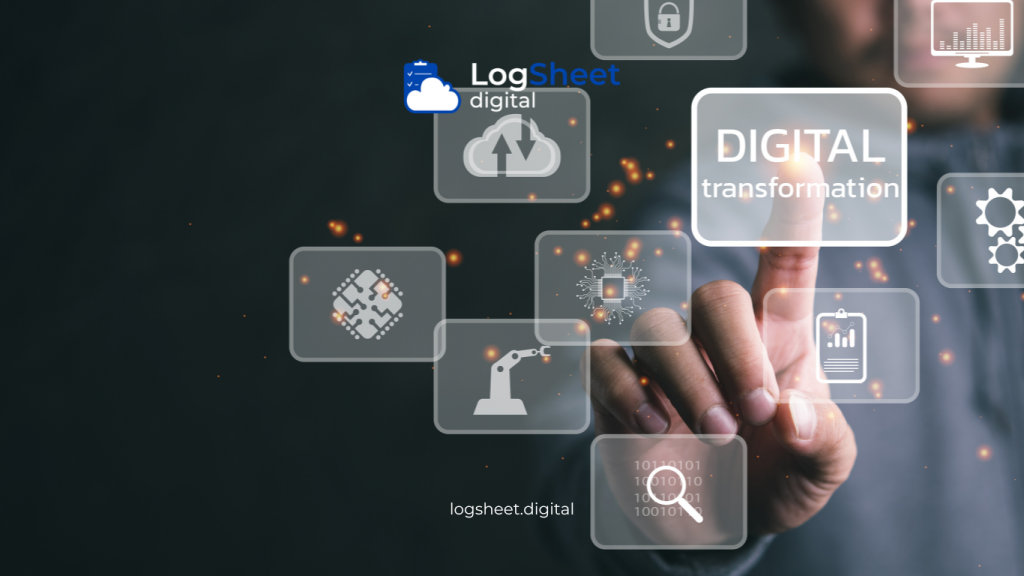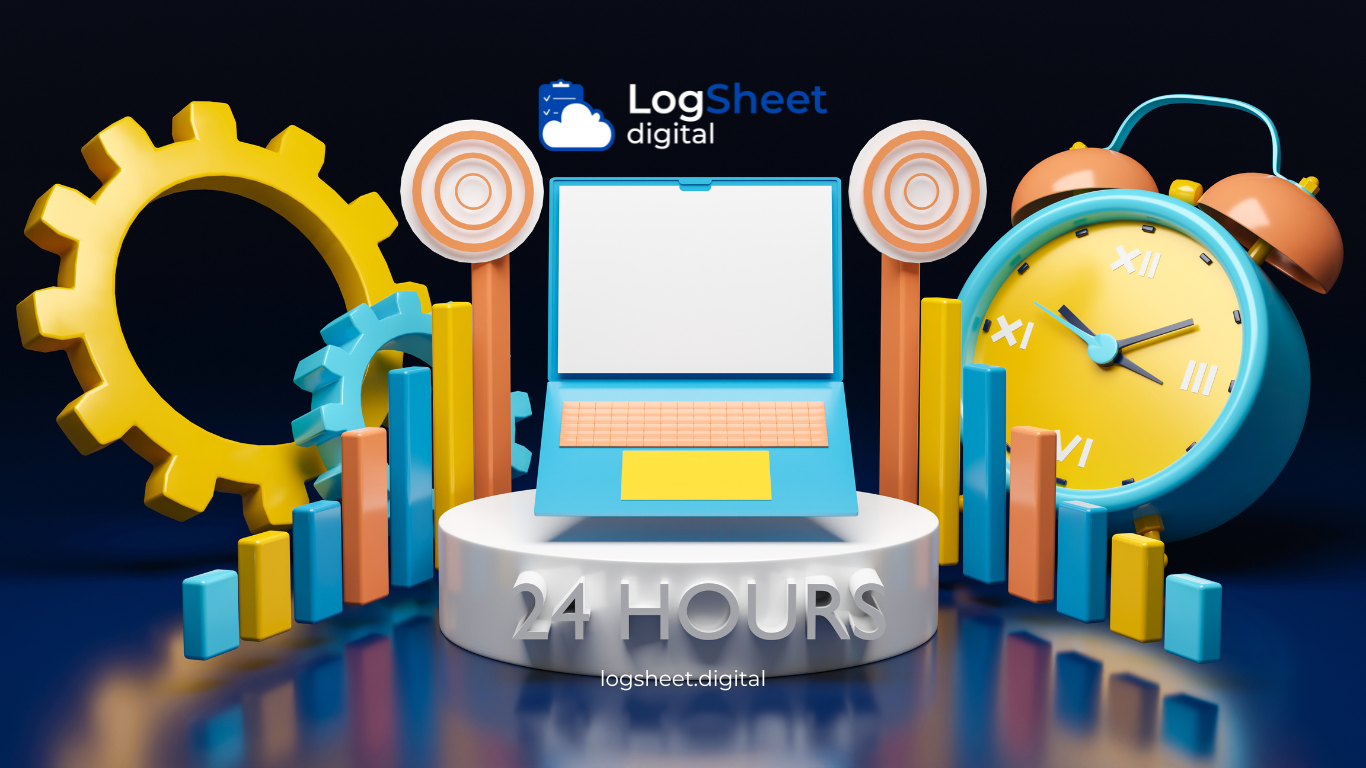In the era of digital transformation, the use of digital logsheets has become one of the main solutions for companies seeking to improve operational efficiency. However, along with the adoption of digital technology, new challenges related to data security have emerged. This article will delve into the challenges of data security in the use of digital logsheets and the solutions that can be implemented to address them.
What is a Digital Logsheet?

Read more: Implementation of Digital Logsheet for Tracking and Monitoring Calibration
A digital logsheet is an electronic version of the manual records typically used to document various activities and operational data. In an industrial context, these logsheets are used to record important information such as production processes, equipment calibration, and routine inspections. With a digital logsheet, the recording process becomes more efficient and accurate, allowing real-time data access from various locations.
Why is Data Security Important in Digital Logsheets?

Read more: Digital Logsheet as a Step Towards Calibration 4.0 in Industry
Data security in digital logsheets is crucial because the data recorded is often sensitive and critical to company operations. Information about calibration procedures, equipment conditions, and inspection records can become targets for cybercriminals if not properly protected. Loss or leakage of data can have significant consequences, such as a loss of customer trust, operational disruptions, and even financial losses.
Data Security Challenges in Digital Logsheets

Read more: Overcoming the Challenges of Implementing Digital Logsheets in Calibration
1. Cybersecurity Threats
One of the biggest challenges in using digital logsheets is the threat of cybersecurity. Malware attacks, ransomware, and hacking attempts can lead to data loss or system takeover by unauthorized parties. This threat increases as more devices are connected to the internet and used in the digital logging process.
2. Network Security
Digital logsheets are often accessed via company networks or the internet. An unsecured or vulnerable network can lead to data breaches or unauthorized access. This issue is especially problematic when digital logsheets are accessed from different locations or using unsecured devices.
3. Data Privacy
In addition to security threats, data privacy is also a major concern. In some industries, the data recorded in digital logsheets may contain sensitive information that must be kept confidential. The storage and management of such data must comply with applicable privacy regulations, such as the GDPR in the European Union.
4. Data Integrity
Data integrity is another aspect that must be considered in digital logsheets. Any unauthorized changes or data manipulation can compromise the accuracy and credibility of the records. Compromised data integrity can lead to errors in decision-making and potentially harm the quality of the products or services produced.
5. Unauthorized Access
Unapproved Access to Data
Unapproved access to digital logsheets can happen if the implemented access control measures are insufficient. Individuals without proper authorization may gain the ability to access, modify, or delete recorded data. Therefore, it is essential to implement strong authentication mechanisms and strictly manage access permissions.
Solutions to Enhance Data Security in Digital Logsheets

Read more: The Advantages of Digital Logsheets in Effective Workshop Maintenance Management
1. Data Encryption
One of the main solutions to enhance data security in digital logsheets is to implement encryption. Encryption ensures that the data stored and transmitted can only be accessed by parties with the correct decryption key. This helps protect data from unauthorized access and leakage during the transfer process.
2. Use of Firewalls and Intrusion Detection Systems
Firewalls and intrusion detection systems (IDS) are essential steps to protect company networks from external threats. Firewalls help block suspicious access, while IDS can detect unusual activity and provide early warnings about potential attacks.
3. Multi-Factor Authentication (MFA)
To prevent unauthorized access, companies can implement multi-factor authentication (MFA). MFA requires users to provide more than one form of verification before they can access digital logsheets. This could be a combination of passwords, tokens, or fingerprints, which enhances the security of user accounts.
4. Data Backup and Recovery
Implementing a reliable backup system is crucial to maintaining data integrity and availability. Regular data backups allow companies to recover lost or corrupted data due to cyberattacks or system failures. A fast and effective data recovery system is also essential in emergency situations.
5. Security Training for Employees
Humans are often the weakest link in cybersecurity. Therefore, regular security training for employees is vital. This training should cover awareness of cybersecurity threats, how to protect sensitive data, and the actions to take in the event of a security incident.
6. Implementation of Data Security Policies
Companies must have comprehensive data security policies consistently applied. These policies should include rules on who can access digital logsheets, how data should be stored and transmitted, and the steps to take in the event of a security breach.
Case Study: Implementing Data Security in Digital Logsheets

Read more: Digital Logsheets: A Revolution in Monitoring and Maintaining Safety Equipment
A multinational pharmaceutical company implemented digital logsheets to track their production processes and equipment calibration. However, after experiencing several security incidents, the company decided to enhance its data security measures. They implemented data encryption, multi-factor authentication, and intrusion detection systems. Additionally, they conducted regular security training for all employees. As a result, security incidents significantly decreased, and the company was able to continue operating smoothly without major disruptions.
The Future of Data Security in Digital Logsheets

Read more: Digital Transformation in Safety Equipment Monitoring: The Role of Digital Logsheets
As technology evolves, data security challenges in digital logsheet will continue to develop. Companies must be prepared to face new threats and adapt quickly to changes. The use of technologies such as artificial intelligence (AI) and machine learning (ML) is expected to help improve threat detection and response to security incidents more quickly and efficiently.
Conclusion

Read more: Improving Maintenance Efficiency with Digital Logsheets in Industry
Data security in digital logsheet is an aspect that should not be overlooked by companies looking to leverage digital technology. By understanding the challenges and implementing the right solutions, companies can protect their sensitive data and maintain operational continuity. Investing in data security is not just about protecting information but also about building trust with customers and maintaining a company’s reputation in a competitive market.
With the right security measures, digital logsheet can become a valuable tool in improving the efficiency and accuracy of a company’s operations while protecting data from the various threats that may arise in the future.






comments (0)